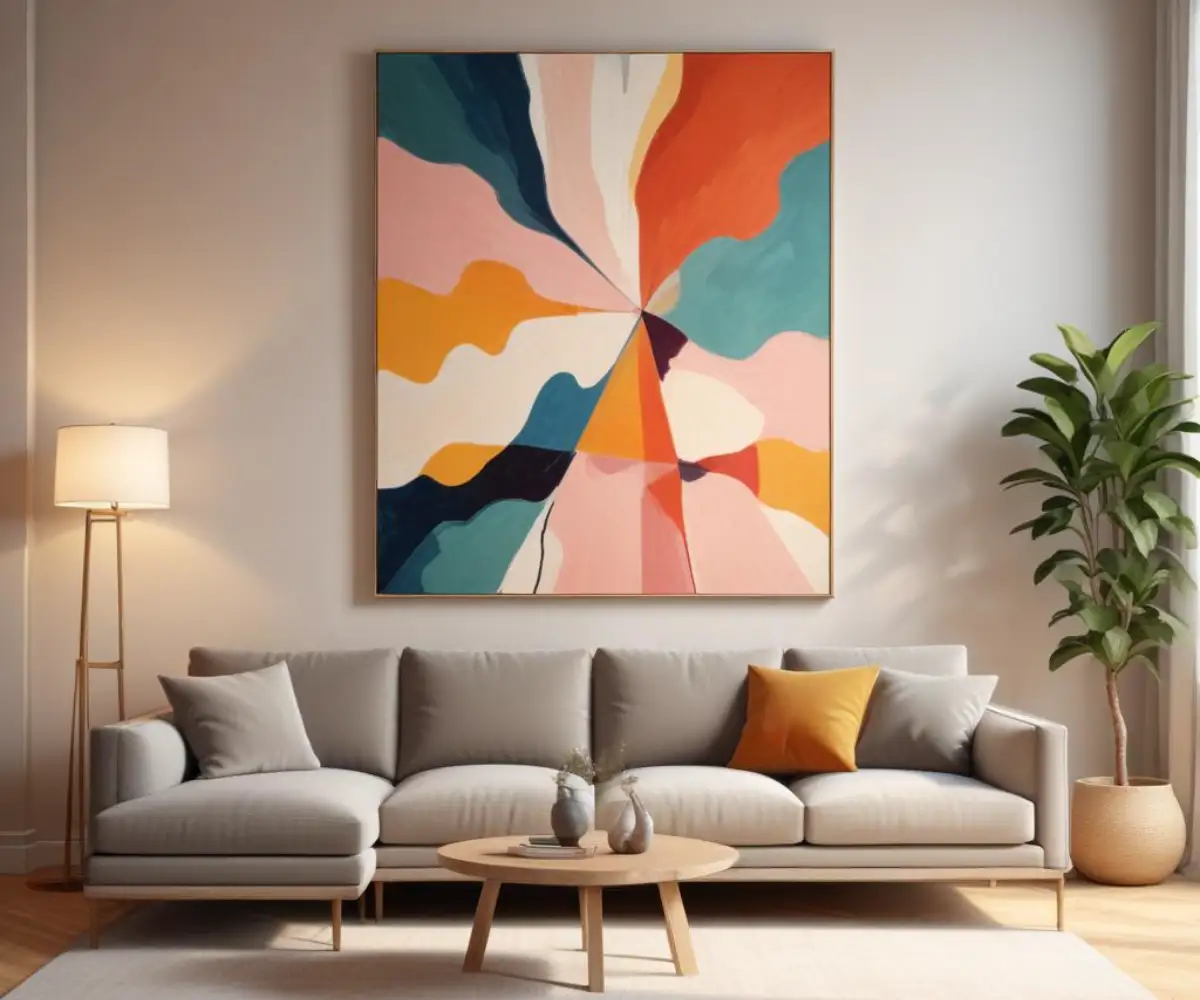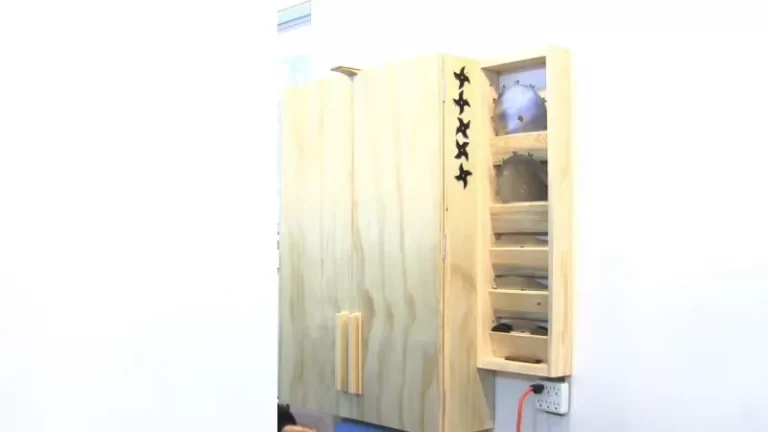Off-Center Couch Wall Decor: Your Awkward Wall Is a Hidden Gem
It’s a common design dilemma that can stump even the most confident decorator. You have the perfect couch, but architectural features like a doorway, window, or fireplace force it off-center against the main wall. That resulting empty space can make the entire living room feel lopsided and unintentional.
Instead of viewing this as a frustrating flaw, see it as a design opportunity. An off-center couch breaks the rigid rules of symmetry and invites creativity. You can craft a dynamic, visually interesting space that has far more personality than a perfectly mirrored layout.
Why Your Couch Isn’t Centered (And Why It’s Okay)
Perfect symmetry is often sought after, but it’s not the only principle of good design. Asymmetrical balance can create a more modern and lived-in feel. Understanding why your layout is the way it is can help you embrace it with confidence.
Common Architectural Hurdles
Living room layouts are rarely a perfect blank slate. Doorways create traffic paths that can’t be blocked, large windows demand to be unobstructed, and a fireplace naturally becomes a focal point. These fixed elements often dictate where a large piece of furniture like a sofa must go, and it’s frequently not the dead center of the wall.
The Myth of Perfect Symmetry
Many people believe that everything in a room must be perfectly centered to look good, but this isn’t true. In reality, asymmetrical balance often creates a more sophisticated and engaging environment. The goal is not perfect symmetry but visual equilibrium. This principle applies throughout home design; even an off-center vanity light can be a powerful, intentional design choice when balanced correctly.
The Golden Rule: Achieving Visual Balance
The secret to decorating around an off-center couch is understanding the concept of visual weight. Every object in a room carries a certain “weight” based on its size, color, texture, and shape. A large, dark-colored sofa has significant visual weight, and your job is to counterbalance it using other elements.
Think of it like a seesaw. The couch is on one side, and you need to place items on the other side to level it out. This doesn’t mean you need an object of the same size. A collection of smaller items or one tall, striking element can effectively balance the space.
7 Genius Solutions for Your Off-Center Couch Wall
Once you shift your mindset from “fixing a problem” to “creating balance,” the design possibilities open up. Here are seven effective strategies to turn that awkward wall into a stunning feature.
1. The Asymmetrical Gallery Wall
A gallery wall is a classic solution for a reason. Instead of centering a small cluster of pictures over the sofa, create a larger, sprawling gallery that extends into the empty wall space. This approach treats the entire wall as a single canvas, drawing the eye across the full expanse and integrating the sofa into the arrangement.
To succeed, vary the size and orientation of your frames. Mix in different types of art, from prints and photos to mirrors and textiles, to add texture and interest. The key is to distribute the visual weight of the gallery to fill the void and balance the couch.
2. Large-Scale Statement Art
An alternative to a multi-piece gallery is to use one massive piece of art. The trick here is to center the artwork on the wall, not over the sofa. This bold move creates a new focal point for the room, making the sofa’s placement feel secondary and deliberate.
This technique works best with abstract art, as a piece without a clear central subject is more forgiving in an asymmetrical layout. The large scale of the art commands attention and provides the necessary visual weight to balance the entire wall effectively.
3. The Floor Lamp and Artwork Combo
One of the most effective strategies is to add vertical height to the empty space next to the couch. A tall floor lamp, especially an arc lamp that leans over the seating area, is perfect for this. It not only fills the vertical space but also adds a source of ambient lighting, making the corner feel cozy and intentional.
Pair the lamp with one or two pieces of art hung on the wall to complete the vignette. This combination adds layers of light and decor, creating a balanced and functional corner that feels thoughtfully designed.

4. Create a Functional Zone
Transform the empty space from a void into a destination. By adding a few key pieces, you can create a functional mini-zone within your living room. This is perhaps the most practical way to achieve balance, as it adds utility as well as style.
Consider a cozy reading nook with a comfortable armchair, a small side table, and a dedicated reading lamp. Another option is a small home office area with a slim console table or floating desk and a stylish chair. This approach makes the layout feel completely intentional.
5. The Mighty Mirror
A large mirror is a powerful design tool. It reflects light, making a room feel brighter and more spacious. When placed strategically in the empty space on the wall, a mirror can provide the visual weight needed to counterbalance the sofa.
Opt for a tall, leaning floor mirror or a large round mirror hung on the wall. The reflection adds depth and dimension, effectively “filling” the space without adding physical clutter. This is an excellent solution for smaller living rooms where you want to create an illusion of more space.
6. Strategic Shelving
Floating shelves or a tall, narrow bookcase can effectively fill the awkward gap. Use them to display a curated collection of books, plants, and decorative objects. This not only adds personality and storage but also allows you to distribute visual weight precisely where you need it.
Arrange the items on the shelves with varying heights and textures to create a dynamic display. The vertical lines of a bookshelf naturally draw the eye upward, which helps to balance the horizontal mass of the sofa.
7. The Power of Plants
Never underestimate the impact of a large houseplant. A tall plant, such as a Fiddle Leaf Fig, Monstera, or Kentia Palm, can add height, organic texture, and a pop of color to the empty corner. Its natural, irregular shape helps to soften the hard lines of the furniture and wall.
Place the plant in a stylish pot that complements your decor. This simple addition can single-handedly provide the visual counterweight needed to make your off-center couch feel perfectly balanced.
Choosing the Right Decor: A Quick-Glance Guide
With several options available, it can be hard to decide which is right for your space. This table breaks down the best use cases for some of the most popular solutions.
| Solution | Visual Impact | Best For… | Pro Tip |
|---|---|---|---|
| Asymmetrical Gallery Wall | High / Customizable | Personalizing a space and filling a large, blank wall. | Use a consistent color palette or frame style to unify the collection. |
| Large Statement Art | High / Bold | Creating a strong, singular focal point. | Center the art on the wall, not the couch, to redefine the room’s anchor. |
| Functional Zone (e.g., Reading Nook) | Medium / Practical | Maximizing utility in larger living rooms. | Use a small area rug to define the zone and make it feel distinct. |
| Floor Lamp & Mirror Combo | Medium / Brightening | Smaller or darker rooms that need more light and perceived space. | Choose a lamp with a sculptural shape to add artistic flair. |
Beyond the Wall: Tying the Whole Room Together
Balancing the main sofa wall is crucial, but don’t forget to consider the rest of the room. A few additional tweaks can help harmonize the entire space and make your asymmetrical layout feel cohesive and expertly designed.
The Role of Area Rugs
An area rug is essential for grounding a seating area. When your couch is off-center on a wall, place the area rug so that it is centered with the main conversational area. Typically, this means having at least the front legs of the sofa and any accompanying chairs on the rug, creating a unified zone regardless of the wall placement.
Balancing with Other Furniture
Use other pieces of furniture to create a sense of equilibrium in the room. If your sofa is shifted to the left side of the wall, place a substantial accent chair or a pair of smaller chairs on the right side of the room. This distributes the furniture’s visual weight and encourages a natural flow of conversation.
The core principle is to think about the room as a whole. The same logic applies when deciding if a TV should be centered on a wall; it’s all about what creates the best overall function and visual harmony for the space, not just one wall.
Common Mistakes to Avoid
While embracing asymmetry, it’s easy to make a few missteps. Avoiding these common errors will ensure your space looks balanced and intentional, not accidental and awkward.
Don’t Ignore the Space
The biggest mistake is doing nothing at all. Leaving a large, empty void next to your sofa will always draw negative attention and make the room feel unfinished. Actively choose one of the strategies above to address the space directly.
Don’t Use Tiny Decor
A small picture or a tiny end table will not have enough visual weight to balance a large sofa. Be bold with your choices. Opt for large-scale art, a tall lamp, or a substantial piece of furniture. Undersized decor will look cluttered and fail to achieve the desired balance.
This is a universal design rule—an imbalanced element, like a poorly placed off-center ceiling fan, can disrupt a room’s entire flow if not counteracted with other strong design choices.
Your Off-Center Couch: From Problem to Feature
An off-center couch is not a design curse; it’s a blessing in disguise. It forces you to move beyond rigid, symmetrical layouts and embrace a more dynamic and personalized approach to decorating. By understanding the principles of visual weight and asymmetrical balance, you can transform that awkward wall into the most interesting and stylish feature of your living room.
So, step back, assess your space, and choose a strategy that works for you. Whether it’s a sprawling gallery wall, a cozy reading nook, or a statement piece of art, the right solution will make your off-center sofa look like it was placed there on purpose by a design professional.

